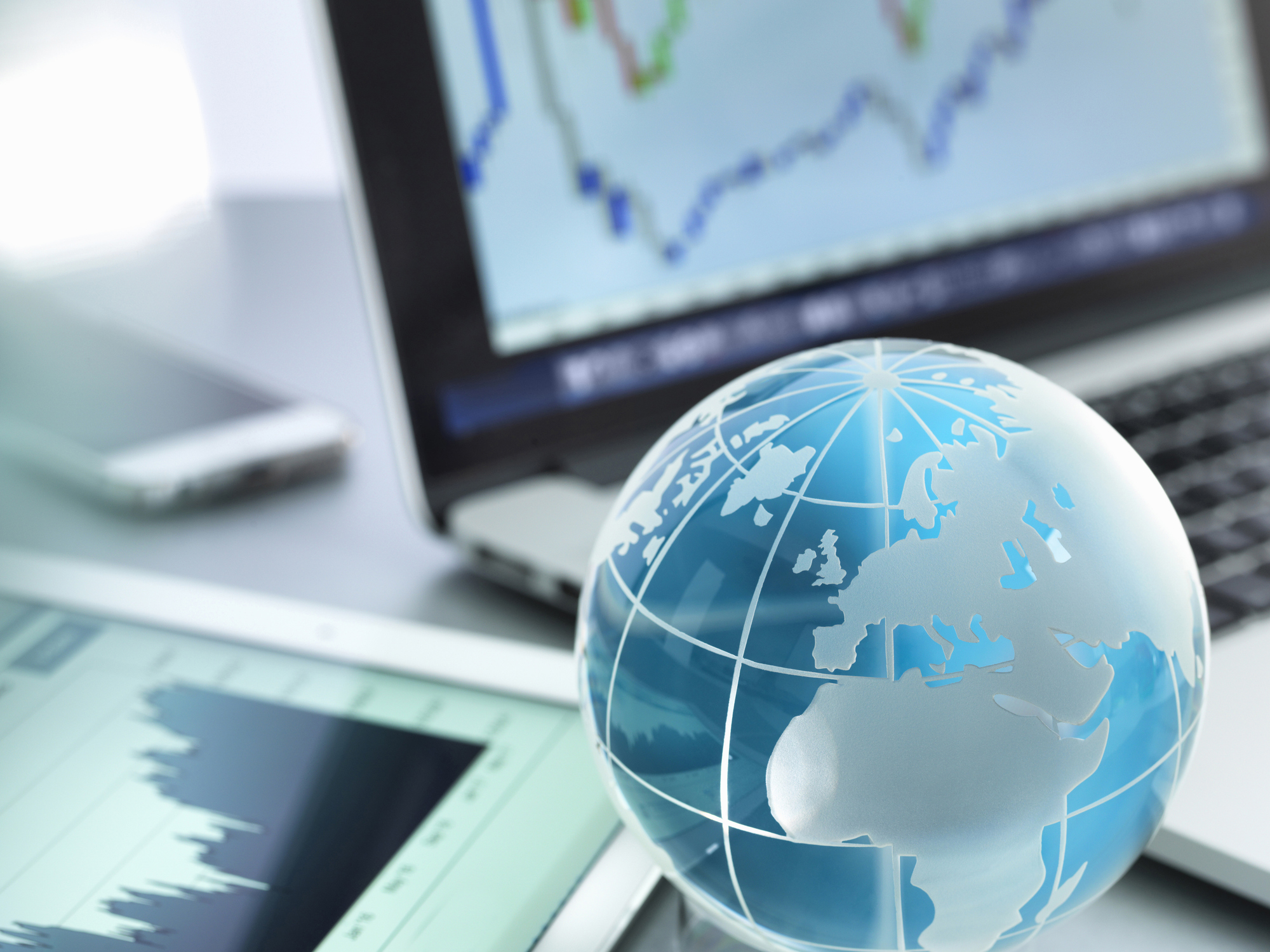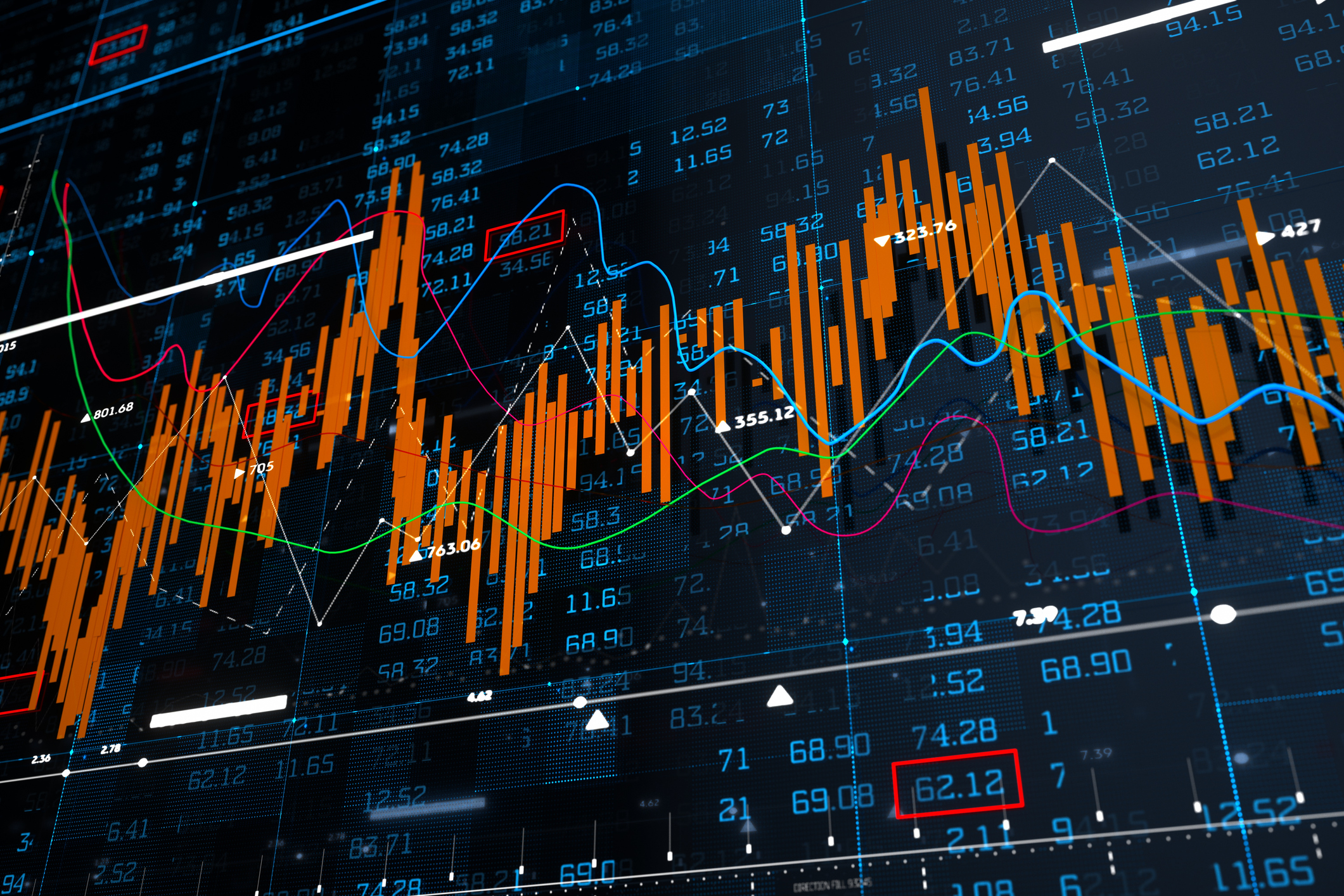The Stock Market Is Selling Off. Here's What Investors Should Do
Investors started fleeing the equities market en masse in response to the Trump administration's "jaw-dropping" tariffs. But the experts say don't panic.


The stock market is clearly still reeling from President Donald Trump's tariff announcement, bouncing between red and green Monday morning and leaving some investors unsure of their next move.
Over the weekend, Trump underscored his commitment to using sweeping tariffs on U.S. trading partners to eliminate trade deficits, telling White House reporters on Sunday, "We're gonna have surpluses or at worst, we're gonna be breaking even." Posting on Truth Social Sunday evening, the president said his tariffs "are already in effect" and are "a beautiful thing to behold."
All three major equity indexes opened more than 3% lower but bounced into positive territory within the first 45 minutes of trading on Monday.

Sign up for Kiplinger’s Free E-Newsletters
Profit and prosper with the best of expert advice on investing, taxes, retirement, personal finance and more - straight to your e-mail.
Profit and prosper with the best of expert advice - straight to your e-mail.
This follows a mass reaction that ended last week in shambles. On Thursday, April 3, the three main indexes finished with losses ranging from 4% to 6% in an immediate reaction to the news. U.S. stocks lost roughly $3.1 trillion in market cap — the biggest one-day decline since the start of the COVID-19 pandemic in March 2020.
The selling continued Friday, after China unveiled its own retaliatory tariffs, with U.S. stock markets falling 6% across the board despite a strong March jobs report.
When the dust settled to end the week, the Dow Jones Industrial Average had joined the S&P 500 in correction territory, which is defined as a 10% drop from the most recent high. The Nasdaq, meanwhile, entered a new bear market, which is a 20% decline from its most recent high.
The rout in U.S. stocks that occurred over Thursday and Friday erased $6.4 trillion in market value — the biggest ever two-day drop, according to Dow Jones Market Data. Also troubling: The U.S. market has now wiped out $10 trillion in value since Inauguration Day.
This likely marks the end of the bull market, says Emily Bowersock Hill, CEO and founding partner at Bowersock Capital Partners, "and it was destroyed by ideologues and self-inflicted wounds."
"Both the magnitude of 'reciprocal' tariffs imposed per country and the set of countries they were imposed on were larger than many had reasonably anticipated," notes UBS Global Research strategist Bhanu Baweja.
The fact that they come on top of 10% universal tariffs "is an added shock," Baweja says. This, he believes, has the potential to "considerably worsen" both domestic and global economic growth in the year ahead.
The UBS economic team feels "it's plausible" that real gross domestic product (GDP) "could be compromised by 1.5 to 2 percentage points" and that inflation could near 5% if these tariffs are not reversed soon, Baweja adds.
Wedbush analyst Daniel Ives says that Trump's "jaw-dropping reciprocal tariff chart … will be shown in classrooms and be written about for years" because it is "so illogical and absurd."
Ives adds that we must assume these tariffs are just "the start of a negotiation," or else the U.S. just sparked "a self-inflicted Economic Armageddon that Trump would send the U.S. and world through over the coming year."
Apple stock is hit hard by Trump tariffs
The high-flying megacap stocks that led the rally in recent years are poised to extend the losses they incurred last week.
Amazon.com (AMZN), Tesla (TSLA) and Nvidia (NVDA) all plummeted during the two-day slide.
Apple (AAPL) is another one of the so-called Magnificent 7 stocks getting hit hard by Trump's tariffs, ending Friday with a weekly loss of nearly 14%.
The iPhone maker relies "on extensive international manufacturing, with the large majority of finished goods sold into the U.S. assembled in (Southeast) Asian nations," making it one of the worst-positioned, says Morgan Stanley analyst Erik Woodring.
Woodring notes that Apple could incur an added tariff cost of more than $38 billion annualized, which works out to roughly 26% of EBIT (earnings before interest and taxes) for fiscal 2026.
What can investors do?
There's a saying on Wall Street that stocks are the only thing people don't want to buy when they're on sale. Thus, there is only one rule to follow when stocks are selling off sharply: Don't panic. Investing in the market is a marathon and not a sprint.
As we've said time and time again, wealth is built through decades, not days. As just one example, those who invested $1,000 in Nvidia 20 years ago would be sitting on tremendous returns today. Even though NVDA shares are down nearly 20% for the year to date, the chipmaker has averaged an annual return of almost 80% in the past five years.
Remember that the idea is to buy low. Stocks are cheaper today than they were yesterday. They might get cheaper tomorrow, but the long-term trend has always been up and to the right. That's why dollar-cost averaging works.
More important, market corrections are normal. "While uncertainty and volatility will continue in the near term, this isn't a market falling apart; it’s a market fighting through uncertainty," says Mark Hackett, chief market strategist at Nationwide.
"For long-term investors, this is part of a bottoming process and a buying opportunity, with markets likely to be meaningfully higher over the next 12 months — it just might be a fistfight to get there," Hackett adds.
Be that as it may, it's abundantly understandable if investors want to de-risk their portfolios to some degree — as long as they understand that they'll also forgo some upside once the market regains its footing.
One way to protect portfolios against market volatility is to hedge with options — particularly put options — which can create a buffer against potential downside. But buyer beware: With the Cboe Volatility Index (VIX) spiking, the cost to buy short-term options insurance is fairly high at the moment.
As for equities, investors can seek traditional safety plays. These can include the best dividend stocks, which "tend to hold up better in market drawdowns," writes Dan Burrows, senior investing writer at Kiplinger.com.
Additionally, investors can seek low-volatility stocks that "can not only help reduce losses in a downturn," writes Kiplinger contributor Kyle Woodley, but they can also prevent "you from panic selling."
To spread risk over a basket of stocks vs individual equities, investors can also seek the best dividend growth ETFs or low-volatility ETFs.
Related content
Profit and prosper with the best of Kiplinger's advice on investing, taxes, retirement, personal finance and much more. Delivered daily. Enter your email in the box and click Sign Me Up.

With over a decade of experience writing about the stock market, Karee Venema is the senior investing editor at Kiplinger.com. She joined the publication in April 2021 after 10 years of working as an investing writer and columnist at a local investment research firm. In her previous role, Karee focused primarily on options trading, as well as technical, fundamental and sentiment analysis.
-
 Investing Abroad Could Pay Off — Here's How
Investing Abroad Could Pay Off — Here's HowCountries overseas are stimulating their economies, and their stocks are compelling bargains.
-
 Retire in Belize for Stunning Natural Beauty and Culture
Retire in Belize for Stunning Natural Beauty and CultureBelize offers miles of protected land and ocean, a rich mix of cultures and a chill lifestyle. Best yet — the income requirement is just $2K per month.
-
 Why Investing Abroad Could Pay Off
Why Investing Abroad Could Pay OffCountries overseas are stimulating their economies, and their stocks are compelling bargains.
-
 Are These the Next Stocks to Split?
Are These the Next Stocks to Split?Interactive Brokers' recently split its stock to makes its shares more accessible to investors. Could these high-priced stocks be next?
-
 Your Home + Your IRA = Your Long-Term Care Solution
Your Home + Your IRA = Your Long-Term Care SolutionIf you're worried that long-term care costs will drain your retirement savings, consider a personalized retirement plan that could solve your problem.
-
 I'm a Financial Planner: Retirees Should Never Do These Four Things in a Recession
I'm a Financial Planner: Retirees Should Never Do These Four Things in a RecessionRecessions are scary business, especially for retirees. They can scare even the most prepared folks into making bad moves — like these.
-
 A Retirement Planner's Advice for Taking the Guesswork Out of Income Planning
A Retirement Planner's Advice for Taking the Guesswork Out of Income PlanningOnce you've saved for retirement, you'll need your nest egg to support you for as many as 30 years. For that, you need a clear income strategy, not guesswork.
-
 Stock Market Today: Stocks Swing as Trump Scraps Canada Trade Talks
Stock Market Today: Stocks Swing as Trump Scraps Canada Trade TalksDespite a mid-afternoon slip, the S&P 500 and Nasdaq ended the day at new record highs.
-
 Why Smart Retirees Are Ditching Traditional Financial Plans
Why Smart Retirees Are Ditching Traditional Financial PlansFinancial plans based purely on growth, like the 60/40 portfolio, are built for a different era. Today’s retirees need plans based on real-life risks and goals and that feature these four elements.
-
 To My Small Business: Well, I've Been Afraid of Changin', 'Cause I've Built My Life Around You
To My Small Business: Well, I've Been Afraid of Changin', 'Cause I've Built My Life Around YouWhile thinking about succession planning might feel like anticipating a landslide (here's to you, Fleetwood Mac), there are strategies you can implement to manage the uncertainty and the transition.